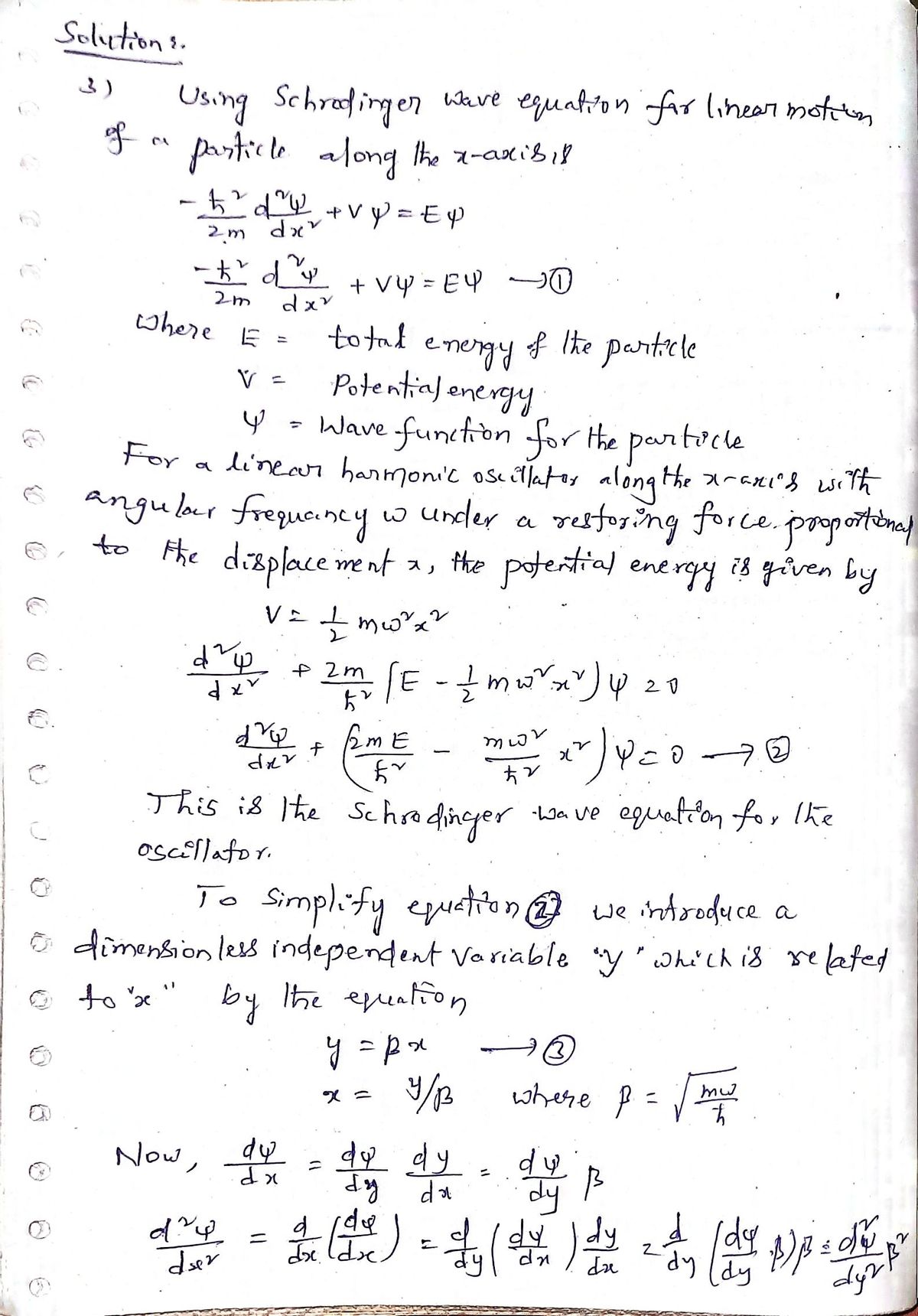Question
![**Problem 3:**
Show that the wavefunction for the lowest energy state of the simple harmonic oscillator,
\[
\Psi_0(x) = C_0 e^{-\frac{m \omega x^2}{2 \hbar}}
\]
satisfies the time-independent Schrödinger equation for a particle of mass \( m \) moving in the potential
\[
V(x) = \frac{1}{2} m \omega^2 x^2.
\]](https://content.bartleby.com/qna-images/question/e6208a55-bec6-433a-a894-0742aca7c9d7/a71a84b3-6e0d-4bc5-b4a9-52f637f0bbbd/14tb1d_thumbnail.jpeg)
Transcribed Image Text:**Problem 3:**
Show that the wavefunction for the lowest energy state of the simple harmonic oscillator,
\[
\Psi_0(x) = C_0 e^{-\frac{m \omega x^2}{2 \hbar}}
\]
satisfies the time-independent Schrödinger equation for a particle of mass \( m \) moving in the potential
\[
V(x) = \frac{1}{2} m \omega^2 x^2.
\]
Expert Solution
arrow_forward
Step 1

Step by stepSolved in 3 steps with 3 images

Knowledge Booster
Similar questions
- 4. Show that the wave functions for the ground state and first excited state of the simple harmonic oscillator, given by W0 (x) and W1 (x), are orthogonal, where %(x) = Aoe¬max² /2h 4 (x) = A1V m@ -mox² /2h -xearrow_forwardQUESTION 7 Use the Schrödinger equation to calculate the energy of a 1-dimensional particle-in-a-box system in which the normalized wave function is 4' = e sin(6x). The box boundaries are at x=0 and x=r/3. The potential energy is zero when 0 < x <- and o outside of these boundaries. 18h? m h2 8m h2 36n2m none are correctarrow_forward4) Consider the one-dimensional wave function given below. (a) Draw a graph of the wave function for the region defined. (b) Determine the value of the normalization constant. (c) What is the probability of finding the particle between x = o and x = a? (d) Show that the wave function is a solution of the non-relativistic wave equation (Schrodinger equation) for a constant potential. (e) What is the energy of the wave function? (x) = A exp(-x/a) for x > o (x) = A exp(+x/a) for x < oarrow_forward
arrow_back_ios
arrow_forward_ios